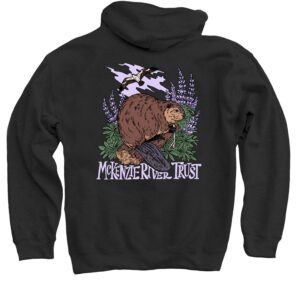Protecting the upper willamette watershed

The Willamette Valley is home to an incredible diversity of people, plants and animals. The Upper Willamette Watershed includes tributaries of the Middle Fork Willamette, Coast Fork Willamette, McKenzie, and Long Tom rivers. Here, these systems come together from the upland hills and forests. Weaving together, they sprawl across floodplains creating important wetland habitats and supporting agriculture. In the headlands, mixed conifer forest yields to open oak savanna and woodland providing critical habitat for many threatened and endangered species.

Habitat conservation and restoration are made possible through the engagement and caring work of the many people committed to stewardship of their lands, waters, resources, and communities. We work on behalf of the community to build a culture of neighbors helping neighbors to care for land and water in the home we share.

There is no doubt that the natural lands and rivers of Oregon are what make it such an incredible place to live, work, and play. McKenzie River Trust offers dozens of opportunities annually for you to explore, learn, and give back to the land through our Connect with the Land programming. There is so much to explore in the Upper Willamette, we hope you will join us.

Restoration across the Willamette Valley focuses on both floodplain function as well as wetland, oak, and prairie habitats. Here in the heart of the Upper Willamette, McKenzie River Trust and our partners are working across the landscape to protect and care for special lands and waters and the species who depend upon them for survival.
Celebrating Living Rivers
Our rivers are the life force of our region. Historically, they were able to move, shift, and dance, carving their way across the floodplain creating dynamic habitat for fish and wildlife. The Willamette River of Oregon supports millions of people as a critical water resource. Caring for that water is more important now than ever before. McKenzie River Trust works to help restore natural function to the river through both earth-moving projects and large-scale restoration plantings. Our work at Green Island, just outside of Coburg OR, is a testament to how a community can come together to protect and care for the living rivers in our backyard.

Oak and Prairie Habitat
One of the most threatened ecosystems of Oregon, less than 3% of oak savanna and less than 7% of oak woodlands remain in the Willamette Valley. These unique habitat systems support hundreds of unique plant and animal species that now rely on a tiny fraction of their historic range for survival. Oak and Prairie habitats are fire-dependent landscapes, having co-evolved with the land management practices of the Kalapuya peoples, and other bands and tribes, since time immemorial. Protecting these remnant areas and working in collaboration with tribes, watershed councils, state agencies, and other partners gives us an opportunity to press pause on species loss, and work together for a stronger future for Oregon’s lands and waters.

Willamette Valley Wetlands
Here in the upper reaches of the Willamette Watershed, rivers have converged for millennia. Until the last century, unconfined rivers danced and sprawled across the floodplain leveling out miles of land. On the valley floor, wet prairie and wetlands provide rich habitat, built on the ashes of Mt. Mazama (Crater Lake). These biologically rich areas offer a home to birds, amphibians, and mammals alike. Up to one-half of North American bird species nest or feed in wetlands and more than a third of endangered species rely directly or indirectly on wetlands for survival. Storing one-third of the world’s carbon, wetlands are also critical to supporting a stable climate. Protecting and caring for wetlands is one of the ways that we can work to preserve the ecological integrity of our region while ensuring space for the abundance of plants and wildlife who rely on these special areas.









